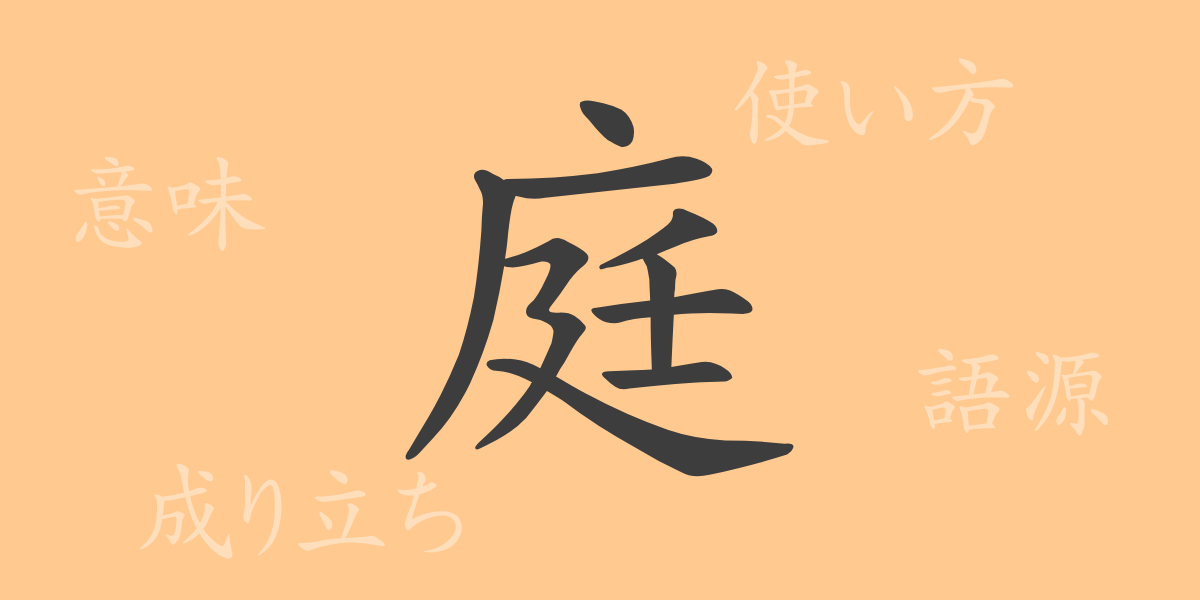The Japanese kanji ‘庭(にわ)’ is deeply ingrained in the housing culture, embodying quietness and beauty, signifying more than just a segment of land. This article explores the kanji ‘庭’ from its origins to its meanings, usage, and its role in Japanese culture. Let’s delve into the rich world of this character, feeling the ambiance of Japanese gardens.
Origins of ‘庭(にわ)’
The kanji ‘庭’ traces back to ancient China, originally denoting the inner courtyards of palaces and aristocratic estates, serving as a gathering place for family and guests, a spot for relaxation. Over time, ‘庭’ came to refer generally to any outdoor space at a residence, a meaning which has carried over into Japanese usage as well.
Meaning and Usage of ‘庭(にわ)’
In contemporary Japanese, ‘庭’ refers to the land around a house, especially when it is landscaped with plants or decorated with stones to enhance its beauty. Metaphorically, it can also represent one’s domain or area of activity. For instance, saying ‘この分野は私の庭’ (this field is my garden) implies expertise in that area.
Readings, Stroke Count, and Radical of ‘庭(にわ)’
The kanji ‘庭’ is widely used in Japanese, with the following details:
- Readings: On’yomi (Sino-Japanese reading) is ‘テイ’, Kun’yomi (native Japanese reading) is ‘にわ’.
- Stroke Count: ‘庭’ consists of 10 strokes.
- Radical: The radical is ‘广(まだれ)’, related to buildings and structures.
Phrases, Idioms, and Proverbs Using ‘庭(にわ)’
‘庭’ is found in various idioms and phrases that enrich the language:
- 家庭(かてい): Refers to a household or family living together.
- 庭園(ていえん): A garden that is carefully planned and beautifully maintained.
- 庭先(にわさき): The area just outside a house, near the entrance.
- 庭をならす: To tidy up the garden, or to sort out a situation smoothly.
- 庭木(にわき): Trees that are planted in a garden.
- 隣の庭は青く見える: A proverb meaning “The grass always looks greener on the other side.”
Conclusion on ‘庭(にわ)’
The kanji ‘庭’ symbolizes the deep affection for living spaces and the Japanese culture of cherishing nature. As a symbol of home and a place of respite, gardens hold a serene presence in the hearts of the Japanese. The rich imagery and expressions stemming from this single character teach us about the depth of the Japanese language. As we appreciate the thoughts and history embedded in ‘庭’, we are reminded to nurture our own ‘gardens’ carefully.

























